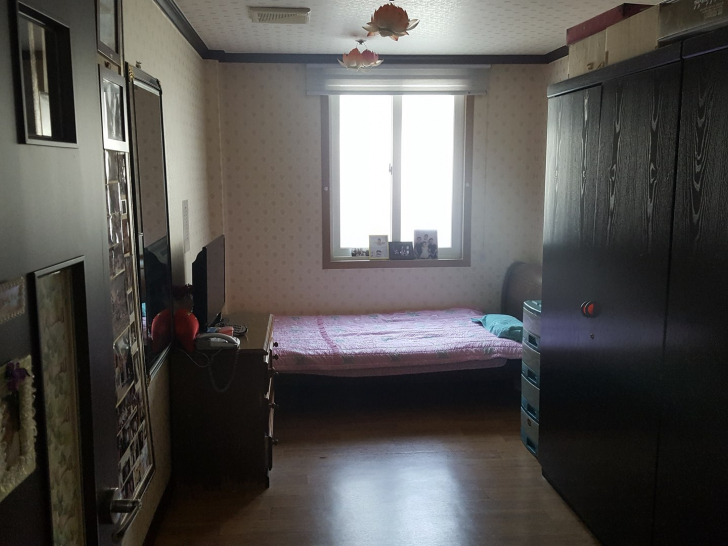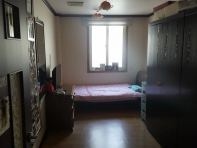1. The rooms of the surviving “Comfort Women” Part 1 - Lee Ok-sun’s room
2. The rooms of the surviving “Comfort Women” Part 2 - Songnisan Lee Ok-sun’s room
3. The rooms of the surviving “Comfort Women” Part 3 - Park Ok-sun’s room
Being oblivious to what is going on
In the 1980s, Korea-Japan relations began to change rapidly with the fingerprinting rejection movement by Korean residents in Japan, the impact of Japanese history textbooks, and so on. During this period, Japan was gradually entering the path towards a conservative shift due to the long-term power of the Liberal Democratic Party (LDP), and with this, the so-called ‘history revisionism’ gained momentum, in which Japan denied any history deemed unfavorable to themselves. As a result, South Korea’s national spirit against Japan began to rise. Such a social atmosphere led to the construction of the Independence Hall of Korea and the widespread popularity of the song 'Dokdo is Korean land'. Also, as the people's voices concerning democratization continuously escalated, discussions on past affairs gradually began to revive.
Against this backdrop of the social atmosphere, from January 4 to January 24, 1990, The Hankyoreh published four articles entitled 'Reporting on the Revengeful Traces of the Korean Women's Volunteer Labour Corps' written by Yun Chung-ok, and this prompted South Korean society to pay increasing attention to the “Comfort Women” issue. And the following year, in 1991, triggered by the late Kim Hak-sun’s testimony, many “Comfort Women” victims testified and reported their own damages, and as a consequence, interest in the Japanese Military “Comfort Women” victims spread nationwide. In line with this, voices calling for support towards the victims began to rise among civil societies, and the South Korean government commenced with preparing the appropriate actions. Consequently, various support measures were implemented at a government level as well as at a private level, and the lives of the victims, who previously had been mostly struggling, were able to experience a slight improvement in their lives.
However, the conditions for the victims who failed to return to South Korea after liberation did not change even after the "Comfort Women" issue became public. Most of the victims living abroad did not even know that the "Comfort Women" issue became widely known in South Korea, and even if they were aware of this, they could not register as victims unless they were South Korean citizens. Also, despite the growing awareness on the Japanese Military “Comfort Women” issue in South Korea, the victims living abroad showed relatively low interest in the issue. Amid this situation, investigations began in 1994 on the victims living abroad. By the early 2000s, dozens of victims were identified, and among them was Park Ok-sun.
Park Ok-sun was born in Miryang, Gyeongsangnam-do in 1924. When she was young, her eldest brother made a mistake in acting as a surety, which subsequently left her family in debt and homeless. Her father died of stress as a result, and the family situation rapidly declined afterwards. In 1941, when Park Ok-sun was 18 years old, she followed one of her friends, who said that she could earn money at a textile factory in China, and was taken to a Japanese Military "Comfort Station" in Heilongjiang Province, China. She was able to leave the Japanese Military "Comfort Station" immediately after liberation, but she did not think of returning to her hometown because of the sense of shame that she had been a victim as “Comfort Women”. During her refuge afterwards, she stopped by a village near Muling in Heilongjiang Province where she fell in love with a widower. She ended up marrying him and settling there.
In 2001, an ethnic Korean compatriot who lived in the same village as Park Ok-sun moved to South Korea when she got married. After the compatriot informed South Korea that there was a Japanese Military "Comfort Women" victim living in the village where she came from, Park Ok-sun’s existence began to be more known. Her whereabouts were identified thanks to the efforts of the civic groups, and after a while, with the help of a broadcasting station, she was able to meet her younger brother and nephew in South Korea. Park Ok-sun, who got reunited with her family as such, was finally able to return to her home country 60 years after leaving her hometown. Upon her return to South Korea, she moved back and forth between her younger brother's house and her nephew's house in Seoul, and eventually was admitted to <House of Sharing> in 2002.
Park Ok-sun is a gentle and caring person. She is usually very calm, but she loves singing so much that she always sings and dances whenever she listens to music. Once, there was an occasion where people had to introduce themselves, but she chose to sing instead of introducing herself, which confused many people. When Park Ok-sun sings, Lee Ok-sun sometimes disapproves of the attention focused on Park Ok-sun, and says, "Park Ok-sun sings in random places even though she cannot even sing! She even sings in restaurants…" By contrast, Songnisan Lee Ok-sun acknowledges Park Ok-sun's vocal talent, and remarks, "People used to come here to beg the sister (Park Ok-sun) to sing because she was so good at it. She was so great!” The words of the two are contradictory, but what Songnisan Lee Ok-sun says is closer to the truth. This is because Park Ok-sun once appeared on KBS's special broadcast in 2014 and sang Arirang without any accompaniment, transforming the audience in attendance into an ocean of tears.
Park Ok-sun’s room
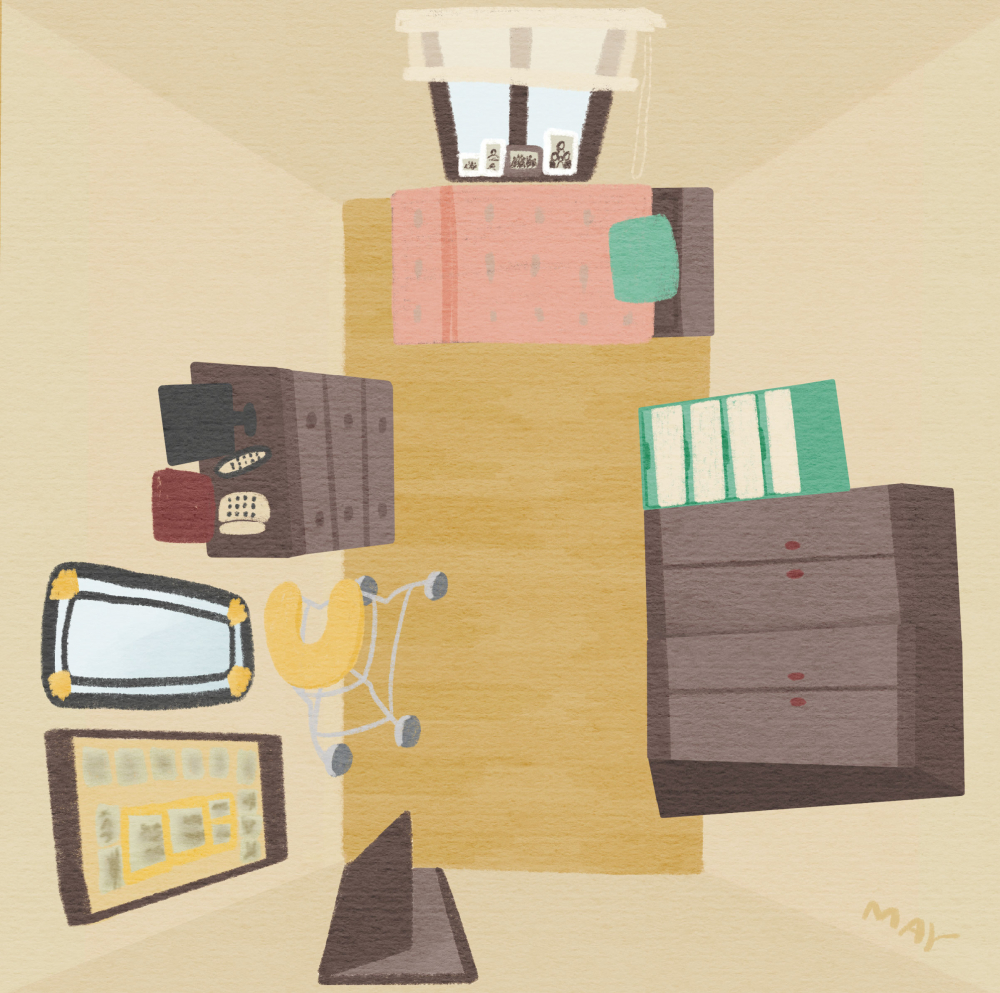
Meanwhile, Park Ok-sun is widely known as a very clean person among the residents of <House of Sharing>, because she always strives to keep things neat. And this character trait of Park Ok-sun is embodied in her very own room. Park Ok-sun’s room is the second room on the right side of the hallway of <House of Sharing>. The room on the right side of her room is Songnisan Lee Ok-sun’s room, which I have previously introduced before through this webzine, and the room on the opposite side belongs to the late Kim Gun-ja who passed away in 2017. Park Ok-sun’s room is simply the vision of tidiness. She spent 18 years in <House of Sharing>, but thanks to her meticulous organization skills, the room contains few unnecessary or overlapping items.
In Park Ok-sun’s room, which was about 13㎡, there were two wardrobes on the right side of the room and a four-tiered plastic cabinet on the left side. At the end of the room, there was also a stone bed which she received from the supporters. Once, I opened her wardrobe to pack her clothes, and I remember being very surprised because her clothes and props inside the wardrobe were immaculately aligned by each season. I was amazed by the sight of the impeccable order, but I was even more astounded that Park Ok-sun, who was suffering from dementia, was able to keep things so perfectly systematic. The room also featured a window above the stone bed, and the photographs of her grandchildren were evenly placed on the window frame.
On the left side of the room, a large rectangular picture frame hung vertically, and several photographs were attached to it like a mosaic. In fact, this method of attaching several photographs in such a large frame is a common style of those residing in <House of Sharing>. Except for the residents who recently came to live in <House of Sharing>, all those who have resided in <House of Sharing> since the early 2000s shared the same style of picture frame. Because I was curious, I tried to look into the reason, but I have not found any answers yet. Next, on the left side of the frame, a full-length mirror hung on the wall, and on its left there was a three-tier wooden cabinet. There were a phone, a TV, and a TV remote control on the cabinet, but I rarely witnessed Park Ok-sun watching TV in her room.
Park Ok-sun's full-length mirror and walker

Park Ok-sun, as I remember, normally sat in the living room rather than in her own room. I think that was because she liked people so much that she preferred being with other people rather than alone. Sometimes when Kang Il-chul makes a fuss or gets angry, Park Ok-sun quietly returns to her room using her walker. I would usually expect a person to walk with the walker until one reaches the front of the bed, but she was a little different. Each of her items in the room always had its designated place. Among them, the place for her walker was the wall with the full-length mirror. For that reason, whenever she entered her room, she left her walker in front of the full-length mirror and walked to her bed without her walker. Sometimes I followed her and turned on the TV by bringing the remote control, saying, "Shall we watch TV here?", but she soon returned the remote control back to its original place.
In addition, she often looked around the room and if she saw objects that had been dislocated from the designated place or if any object was facing the wrong angle, she arranged them back in order before resuming whatever she was doing. In response, some people used to claim that the damage from being at the Japanese Military "Comfort Station" ended up making her develop the personality that she has now. However, many people are just naturally tidy even without such an extent of victimhood, so I thought such a claim was not necessarily the case. Songnisan Lee Ok-sun often praised Park Ok-sun, noting, "This sister cleans her room so well and is such a good homemaker. She is great at everything!"
Park Ok-sun’s broken wardrobe and her blue storage box
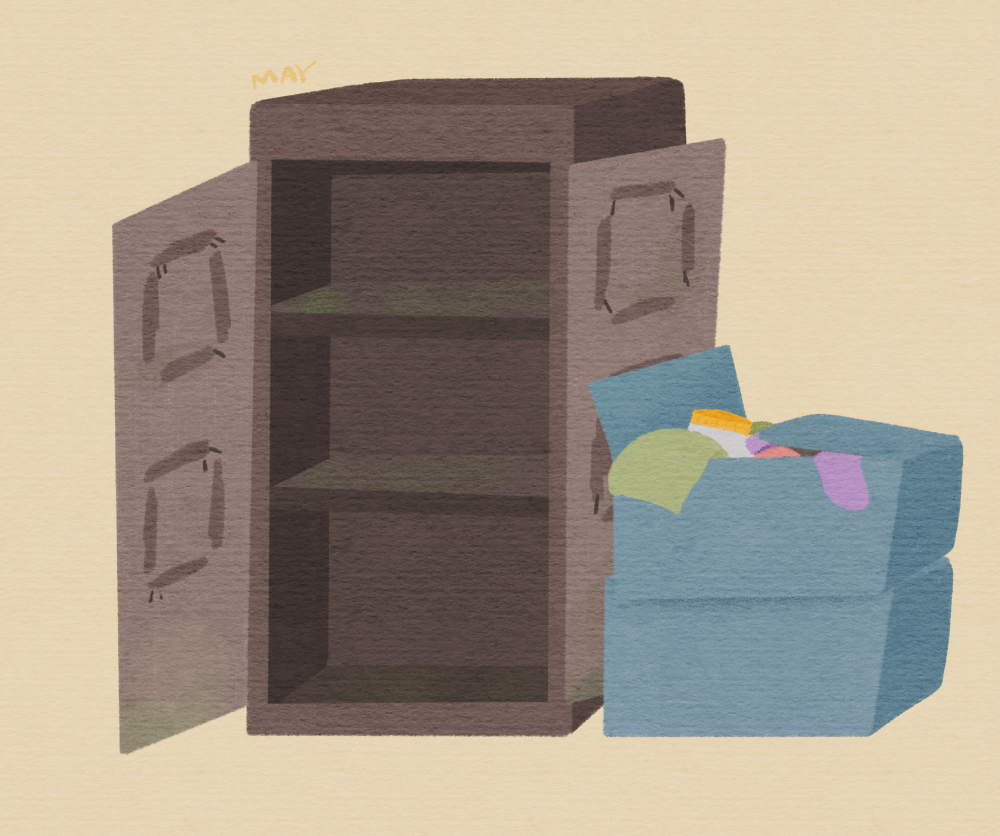

However, such an immaculate and orderly room slowly began to resemble an ownerless room when she became bedridden due to her deteriorating health from early 2019. With the addition of the extension work to the building, even the remaining items in her room ended up being destroyed. As mentioned in 'Lee Ok-sun's room', the management of <House of Sharing> at the time cleared the rooms of the residents without permission for the expansion of the living quarters and piled up their belongings in the outdoor parking lot during the monsoon season. All of those items were soon damaged by the monsoon rain, and the items that suffered the most severe destruction were Park Ok-sun's belongings. In particular, the wooden cabinet became impaired so much that it could not be used again at all.
In the case of Lee Ok-sun and Songnisan Lee Ok-sun, it was not difficult to restore their damaged rooms because their cognitive abilities were still intact and we still had a lot of documents about their rooms. However, Park Ok-sun was suffering from dementia, which made it challenging to ask her about the memories of her room, and strangely, unlike other rooms, only one photograph of her room remained available. On top of that, as her items were damaged, Park Ok-sun's room still remains the only room that has not been restored yet.
Due to the COVID-19 crisis and the public interest disclosure report which was triggered by the damage to the “Comfort Women” victims’ rooms in 2020, we could no longer see the “Comfort Women” victims testify at <House of Sharing> for several months. <House of Sharing> had never previously experienced this kind of event since its establishment. As a result, small changes began to emerge among the residents of the House of Sharing. First of all, they gradually stopped using the expressions symbolizing the Japanese Military “Comfort Women” issue, including "Comfort Women", Japanese Military “Comfort Station” or ‘apology and compensation’, and so on. Instead, the residents began to use phrases such as "Let’s go get some fresh air”, "We need to make kimchi", "We have to go to Songnisan(a Mountain)", or "Why do you only listen to that grandmother but not me?", and so on.
Those may seem like negligible changes to some people, but they gave me a significant shock. While observing those changes, I started to ponder the reasons and the background of how the surviving “Comfort Women” became to be seen as victims. What I felt while spending time with the residents of <House of Sharing> over the past three years is that they spend most of their energy on today (now) rather than yesterday (past) or tomorrow (future). Most people live for the sake of the present and the future. Perhaps no one lives for the past. The same goes for all the residents of <House of Sharing>, including Park Ok-sun. The reason why they are now holding onto the past is for the sake of the present. If they knew that they could paint the present and the future without holding onto the past, and if voices emerged from our society which said that they should, would they have spent the last days of their lives in <House of Sharing>?
Except for Park Ok-sun's room, all the rooms are now restored, including those of Lee Ok-sun, Songnisan Lee Ok-sun, the late Kim Gun-ja, and Kang Il-chul. Of course, Park Ok-sun's room will also be restored soon. As previously introduced, each of their rooms is ordinary, but the lives of the rooms’ owners are extraordinary. They are the typical rooms for those who have lived unusual lives. Through these rooms, I will continue to talk about how our society viewed the “Comfort Women” victims, how that perspective influenced their lives, and what their lives really looked like.
Credit
Illustrated by Baik Jung-mi
* The photograph below, taken in October 2018, shows Park Ok-sun's room. It is the only photograph that can be referred to for the room restoration.
Related contents
-
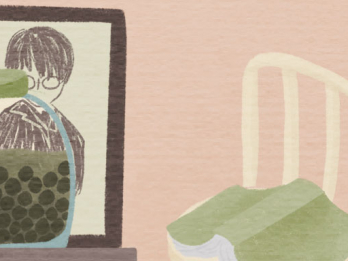
- The rooms of the surviving “Comfort Women” - Lee Ok-sun’s room
-
The traces and history of the surviving “Comfort Women” fill all corners of the <House of Sharing> but are most visible inside the rooms of the surviving “Comfort Women”.
-
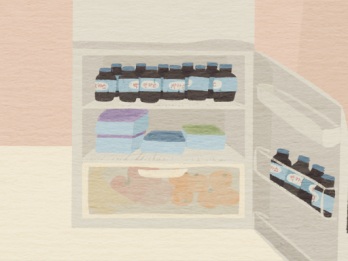
- The rooms of the surviving “Comfort Women” – Songnisan Lee Ok-sun's room
-
Songnisan Grandmother had anticipated that she would live in Songnisan for the rest of her life but ended up coming to the <House of Sharing> in the fall of 2018 after having knee surgery which made it difficult for her to easily move around.
- Writer Kim Dae-wol
-
He is the Head Curator of the <House of Sharing>. He completed a doctoral course in the Department of Korean History at Kookmin University. He was in charge of the overall planning of <The End of the Tunnel>. While working and studying simultaneously, he gives special lectures on the Japanese Military “Comfort Women” issue by taking advantage of his experience whenever possible.
corea807@hanmail.net
